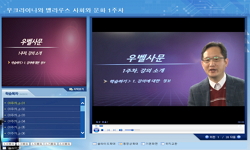Surzhyk is defined as a mixed language of Ukrainian and Russian. Although surzhyk is widely spoken and casually observed in many places of Ukraine, it has not been treated as a serious topic for linguistic research and consequently has remained a poor...
http://chineseinput.net/에서 pinyin(병음)방식으로 중국어를 변환할 수 있습니다.
변환된 중국어를 복사하여 사용하시면 됩니다.
- 中文 을 입력하시려면 zhongwen을 입력하시고 space를누르시면됩니다.
- 北京 을 입력하시려면 beijing을 입력하시고 space를 누르시면 됩니다.
https://www.riss.kr/link?id=A103948954
-
저자
허승철 (고려대학교)
- 발행기관
- 학술지명
- 권호사항
-
발행연도
2013
-
작성언어
Korean
-
주제어
Surzhyk ; Bilingualism ; Ukraine ; Language Contact ; Code Switching ; Code Mixing ; Language Mixing ; 수르직 ; 이중언어 사용 ; 우크라이나 ; 언어 접촉 ; 코드 전환 ; 코드 혼합 ; 언어 혼합
-
등재정보
KCI등재
-
자료형태
학술저널
- 발행기관 URL
-
수록면
307-344(38쪽)
-
KCI 피인용횟수
3
- DOI식별코드
- 제공처
-
0
상세조회 -
0
다운로드
부가정보
다국어 초록 (Multilingual Abstract)
Surzhyk is defined as a mixed language of Ukrainian and Russian. Although surzhyk is widely spoken and casually observed in many places of Ukraine, it has not been treated as a serious topic for linguistic research and consequently has remained a poorly understood linguistic phenomenon by scholars. Although surzhyk has not attracted the attention of linguists for several reasons, it is an important research topic which can shed light on many aspects of language contact such as diglossia, code switching, code mixing, substratum interference and so on.
Several definitions of surzhyk proposed by scholars show the complex nature of surzhyk. Surzhyk can be treated as fused lects with a certain set of linguistic norms, but at the same time it can be perceived as the aggregate of idiolects of individual surzhyk speakers. In Ukrainian language community surzhyk has generally played the role of low language while Russian and Ukrainian have play the role of high language during Soviet period and the era after the independence respectively.
Bilaniuk proposed several types of surzhyk from the historical and sociological perspective. The sixth type of surzhyk called 'surzhyk of the younger generation after the independence' should be added, taking into consideration of the growing number of younger generation who learns the linguistic norms of Ukrainian at school, but acquires the speaking ability of Russian without seriously learning its grammatical structure. Flier's linguistic analysis of various aspects of language mixing and interference of both languages should be evaluated as the breakthrough study of surzhyk regardless of limited language data for analysis. Myers-Scotton's Matrix Language Model analysis, Auer's continiuum model and Muysken's typology of code mixing are also useful tool for sociolinuistic analysis of surzhyk.
For the study of surzhyk in the future, it is important to collect various types of language data of surzhyk and create a surzhyk corpus. Since surzhyk has been formed in the context of historical, social and political changes which Ukraine has experienced, it is desirable to conduct interdisciplinary researches by scholars in several fields than by individual scholar with a monolithic approach. It is also important to have a balanced perspective that Russian and Ukrainian both could be matrix language and embedded language and the direction of linguistic influence and interference could be bi-directional. So far nobody has paid attention on surzhyk which can be used in the process of learning Ukrainian after learning Russian as foreign language and vice versa. The research on this topic also can shed light on the nature of surzhyk and language mixing which can take place when learning two foreign languages which are genetically closely related.
Since Ukraine is a bilingual state and Ukrainian is in the process of establishing norms as the literary language, the phenomenon of surzhyk would not disappear in the near future. Surzhyk will remain an important research subject because it can influence the direction of linguistic change of Ukrainian and the spread of literary Ukrainian language and, at the same time, it is a valuable source for research data for sociolinguistic study and language education.
참고문헌 (Reference)
1 허승철, "우크라이나의 이중 언어 상황과 언어의 정치학" 한국러시아문학회 30 (30): 315-341, 2009
2 허승철, "나의 사랑 우크라이나" 뿌쉬킨하우스 2007
3 Українська мова, "Енциклопедія" Київ 2004
4 Olszanski, Tadeusz, "The Language Issue in Ukraine: an attempt at a new perspective" Centre for Eastern Studies 2012
5 Vakhtin, N., "Suržyk: In Search of a Research Object" 29 : 327-348, 2007
6 Flier, Michael, "Surzhyk: the rules of engagement" 22 : 113-136, 1998
7 Del Gaudio, Salvatore, "On the Nature of Suržyk: a double perspective" Sagner 2009
8 Masenko Larysa, "Language Situation in Ukraine: Sociolinguistic Analysis, In Language Policy and Language Situation in Ukraine" Peter Lang 2009
9 shchegelolena, "Language Situation in Post‐soviet Kyiv: Surzhyk as sociolinguistic phenomenon and its perception by Kyivites" 동유럽발칸연구소 27 : 161-184, 2011
10 Kent, Kateryna, "Language Contact: Morphosyntactic Analysis of Surzhyk Spoken in Central Ukraine" 33-53, 2010
1 허승철, "우크라이나의 이중 언어 상황과 언어의 정치학" 한국러시아문학회 30 (30): 315-341, 2009
2 허승철, "나의 사랑 우크라이나" 뿌쉬킨하우스 2007
3 Українська мова, "Енциклопедія" Київ 2004
4 Olszanski, Tadeusz, "The Language Issue in Ukraine: an attempt at a new perspective" Centre for Eastern Studies 2012
5 Vakhtin, N., "Suržyk: In Search of a Research Object" 29 : 327-348, 2007
6 Flier, Michael, "Surzhyk: the rules of engagement" 22 : 113-136, 1998
7 Del Gaudio, Salvatore, "On the Nature of Suržyk: a double perspective" Sagner 2009
8 Masenko Larysa, "Language Situation in Ukraine: Sociolinguistic Analysis, In Language Policy and Language Situation in Ukraine" Peter Lang 2009
9 shchegelolena, "Language Situation in Post‐soviet Kyiv: Surzhyk as sociolinguistic phenomenon and its perception by Kyivites" 동유럽발칸연구소 27 : 161-184, 2011
10 Kent, Kateryna, "Language Contact: Morphosyntactic Analysis of Surzhyk Spoken in Central Ukraine" 33-53, 2010
11 Thomson, Sarah, "Language Contact, Creolization and Genetic Linguistics" University of California Press 1988
12 Hrushevskii, Mikhail, "Iliustririvannaia Istoriia Ukrainy" MMP 1996
13 Auer, Peter, "From Code Switching via Language Mixing to Fused Lects: Toward a Dynamic Typology of Bilingual Speech'" 3 (3): 309-332, 1999
14 Stadnik-Holzer, Elena, "Epistolary Suržyk: a contribution to the study of a Ukrainian substandard" 29 : 349-369, 2007
15 Bilaniuk Laada, "Contested Tongues: Language politics and cultural correction in Ukraine" Cornell University Press 2005
16 Grenoble, Lenore, "Contact and the Development of the Slavic Languages, In The Handbook of Language Contact" Blackwell Publishing Ltd 2010
17 Myers-Scotton, Carol, "Contact Linguistics: Bilingual encounters and grammatical outcomes" Oxford University Press 2002
18 Muysken, Pieter, "Bilingual Speech: a typology of code-mixing" Cambridge 2000
19 Bilaniuk, Laada, "A Typology of Surzhyk: Mixed Ukrainian-Russian Language" 8 (8): 409-425, 2004
20 Flier, Michael, ""Surzhyk or surzyks", Belarussian Trasjanka and Ukrainian Suržyk: structural and social aspect of their description and categorization" 17 : 39-56, 2008
동일학술지(권/호) 다른 논문
-
수르직(Surzhyk) 연구 서설: 수르직의 정의, 성격, 유형론에 대한 비판적 접근
- 한국러시아문학회
- 허승철
- 2013
- KCI등재
-
MoAepHH3aIIHR pycckoH peyH B IIPHMeHeHHH K IIPeIIoAaTeJIIO pycckoro R3bIKa
- 한국러시아문학회
- ( Bhhorpaaoba H B )
- 2013
- KCI등재
-
- 한국러시아문학회
- 김연경
- 2013
- KCI등재
-
구밀료프의 희곡 「이집트의 돈후안」을 통해 본 돈 후안의 부활과 이집트의 이미지
- 한국러시아문학회
- 김태옥
- 2013
- KCI등재
분석정보
인용정보 인용지수 설명보기
학술지 이력
| 연월일 | 이력구분 | 이력상세 | 등재구분 |
|---|---|---|---|
| 2027 | 평가예정 | 재인증평가 신청대상 (재인증) | |
| 2021-01-01 | 평가 | 등재학술지 유지 (재인증) |  |
| 2018-01-01 | 평가 | 등재학술지 유지 (등재유지) |  |
| 2015-01-01 | 평가 | 등재학술지 유지 (등재유지) |  |
| 2011-01-01 | 평가 | 등재학술지 유지 (등재유지) |  |
| 2009-01-01 | 평가 | 등재학술지 유지 (등재유지) |  |
| 2007-01-01 | 평가 | 등재학술지 유지 (등재유지) |  |
| 2004-01-01 | 평가 | 등재학술지 선정 (등재후보2차) |  |
| 2003-01-01 | 평가 | 등재후보 1차 PASS (등재후보1차) |  |
| 2001-07-01 | 평가 | 등재후보학술지 선정 (신규평가) |  |
학술지 인용정보
| 기준연도 | WOS-KCI 통합IF(2년) | KCIF(2년) | KCIF(3년) |
|---|---|---|---|
| 2016 | 0.21 | 0.21 | 0.21 |
| KCIF(4년) | KCIF(5년) | 중심성지수(3년) | 즉시성지수 |
| 0.2 | 0.21 | 0.377 | 0.06 |




 KCI
KCI





